Key takeaways
- Mindfulness apps support parents by providing brief, flexible practices that help manage stress and foster patience in daily parenting situations.
- They encourage a shift from control to presence, improving emotional responses and enhancing connections with children through mindful interactions.
- Choosing apps with friendly guidance, reminders, and easy progress tracking can make mindfulness practices feel more accessible and motivating.
- Integrating mindfulness into parenting can create meaningful moments, promote self-care, and enhance family bonds through shared exercises.

Understanding Mindfulness Apps in Parenting
When I first stumbled upon mindfulness apps, I was curious but skeptical—could an app really help me manage the chaos of parenting? Over time, I realized these tools offered more than meditation timers; they provided daily reminders to pause, breathe, and be present with my kids. Have you ever noticed how those small pauses can change your entire outlook on a hectic day?
What struck me most was how these apps tailored mindfulness practices to fit my unpredictable schedule as a parent. Rather than feeling like another task to complete, they became gentle companions guiding me toward calm in moments when stress felt overwhelming. It’s like having a supportive friend whispering, “You’ve got this,” just when you need it.
Understanding mindfulness apps in parenting isn’t just about technology—it’s about embracing an accessible path to patience and presence. When life gets loud, these apps help create pockets of stillness, reminding me that being mindful isn’t a perfect state but a practice I can nurture daily. Doesn’t that possibility feel empowering?
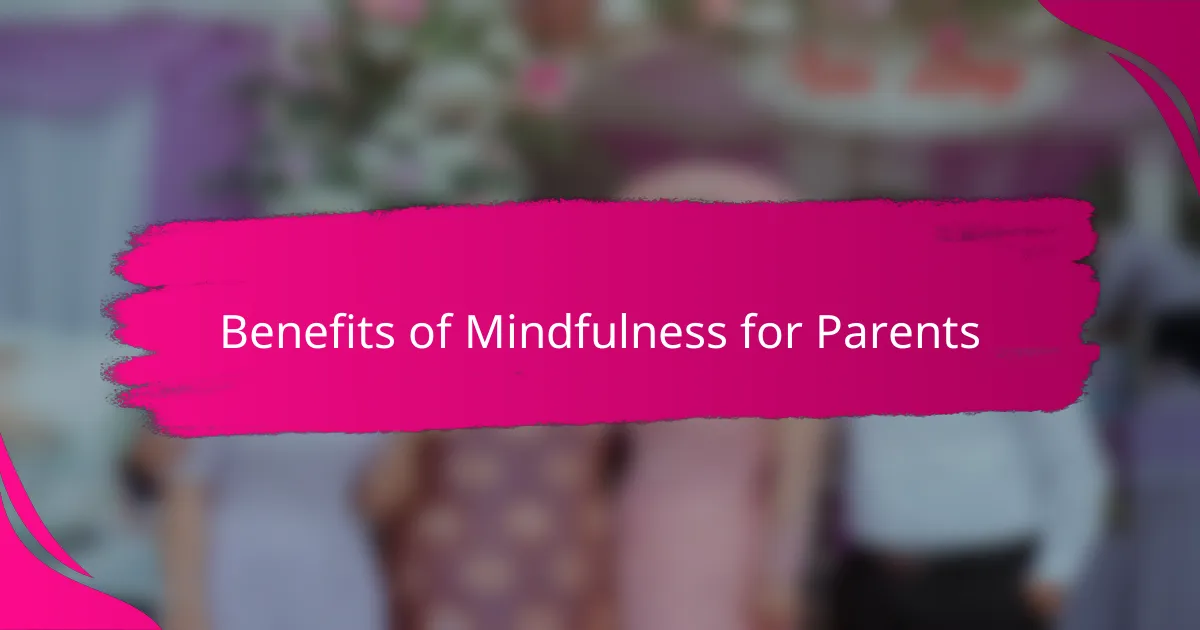
Benefits of Mindfulness for Parents
What I’ve found most powerful about mindfulness as a parent is how it helps me tune into my own emotions before reacting. Instead of snapping when my toddler throws a tantrum, I pause and breathe, which changes how I respond. Have you ever noticed how simply being present can soften a moment of stress?
Mindfulness also sharpens my awareness of what my children need—sometimes it’s patience, other times just my full attention. Those subtle shifts make parenting feel less like a battle and more like a meaningful conversation, even on the toughest days. Isn’t it amazing how a small change in perspective can transform the whole experience?
At times, mindfulness has been a lifeline during exhausting mornings or when I feel pulled in too many directions. It gives me a chance to reset, reminding me that taking care of myself helps me be a better parent. Don’t we all need a little permission to slow down and breathe amidst the chaos?
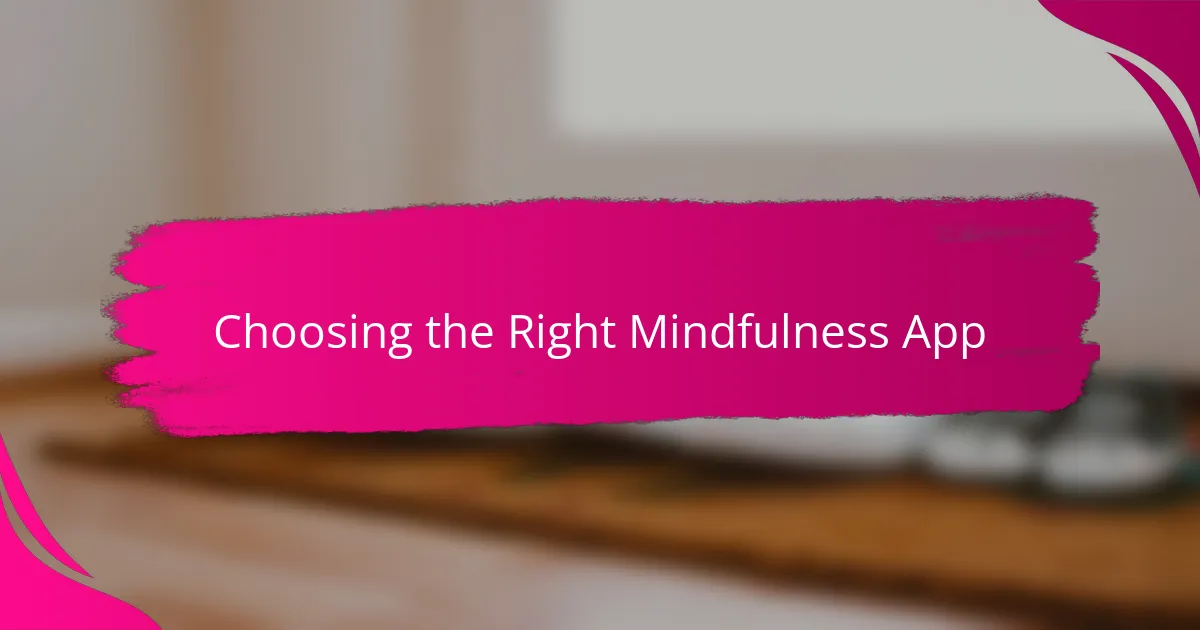
Choosing the Right Mindfulness App
Choosing the right mindfulness app felt overwhelming at first—there are so many options out there. What helped me was focusing on apps that offer short, flexible sessions since long meditations didn’t fit into my unpredictable parenting schedule. Have you ever tried squeezing in a 20-minute practice only to be interrupted? That’s where a quick, guided 3-5 minute pause makes all the difference.
I also looked for apps with a warm, encouraging tone, something that felt like a gentle reminder rather than a strict instructor. From my experience, the voice guiding you through mindfulness should feel like a friend, especially when your mind is racing with parenting worries. Don’t you find it easier to stay calm when someone speaks kindly and understands your daily challenges?
Lastly, I paid attention to features like reminders and progress tracking because they kept me motivated without pressure. It was reassuring to see small wins accumulate and to have nudges that fit naturally into my day. Have you noticed how a simple alert can turn a distracted moment into a chance to breathe and reset? Those little touches made the app feel like a personal mindfulness coach rather than a tool you have to manage.
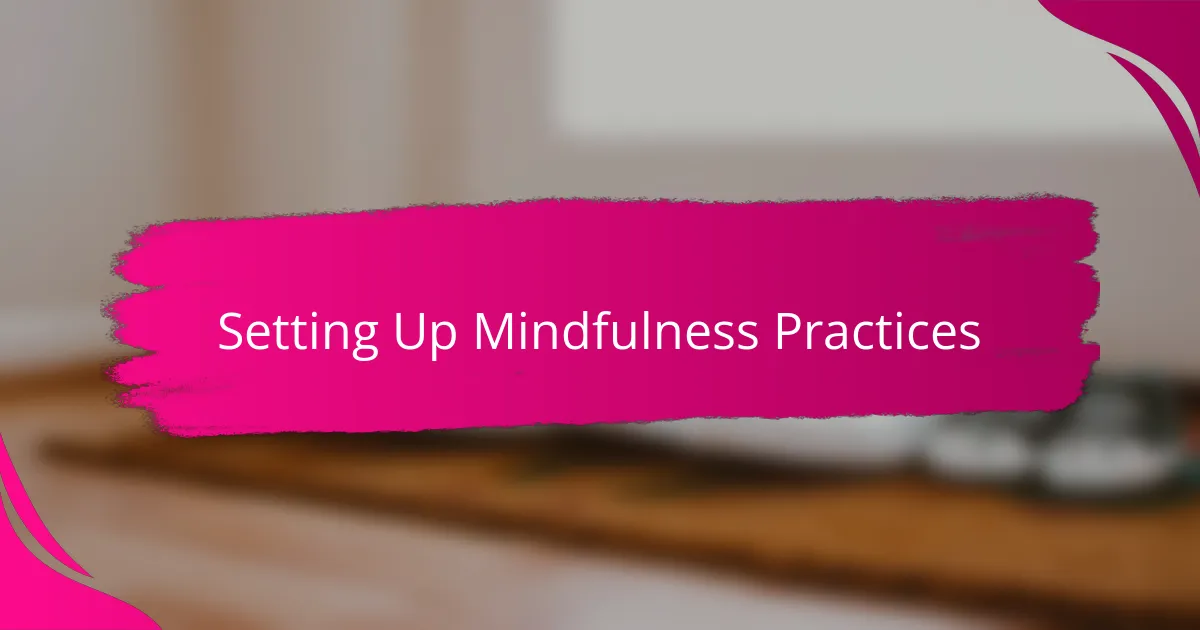
Setting Up Mindfulness Practices
Setting up mindfulness practices was less about creating a strict routine and more about finding simple ways to weave calm into my chaotic days. I started by dedicating just a couple of minutes each morning to a brief meditation—nothing fancy, just a moment to center myself before the day began. Have you ever tried starting your day with a pause and noticed how it colors everything that follows?
Another thing that worked for me was using the app’s reminder feature—not as a nag but as a gentle nudge that whispered, “Time to breathe.” These small prompts became little anchors throughout the day, keeping me grounded even when parenting demands pulled me in every direction. It’s amazing how a tiny signal can shift your mindset from frazzled to focused so quickly.
I also experimented with involving my kids in simple mindfulness moments, like mindful breathing or noticing sounds together. This made the practice feel less like a solo task and more like a shared ritual, strengthening our connection in subtle but meaningful ways. Have you noticed how kids respond when you slow down and invite them into your calm? For me, those moments became some of the most peaceful parts of the day.
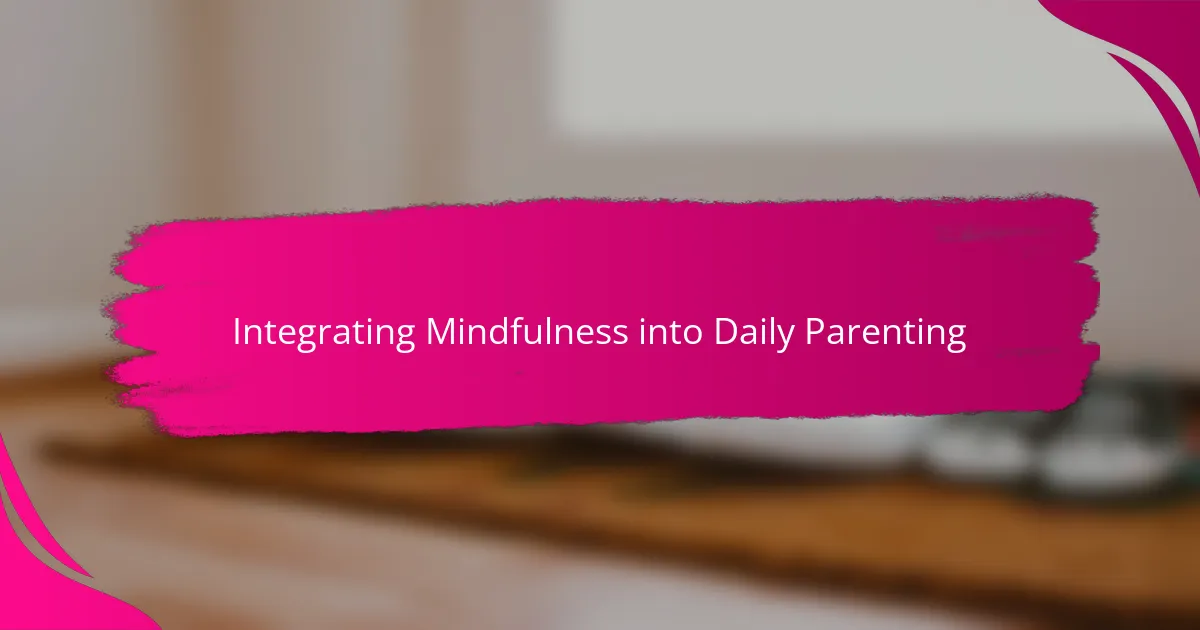
Integrating Mindfulness into Daily Parenting
Integrating mindfulness into daily parenting meant shifting my mindset from trying to control every moment to simply being present with my children—even when things got messy. I realized that even a few mindful breaths during a chaotic breakfast routine helped me respond with more patience rather than frustration. Have you ever caught yourself reacting automatically, only to wish you’d paused first?
I also found that turning toward mindfulness in those small, everyday interactions felt more natural than setting aside big chunks of time. For example, paying full attention to my child’s story during bedtime—not planning what’s next, but truly listening—became a simple way to practice presence. Those moments are surprisingly grounding for both of us, don’t you think?
Sometimes, integrating mindfulness felt like a gentle reminder that I don’t have to be perfect at parenting; I just need to be here, now. Using app-guided pauses as mini check-ins helped me release the pressure to have it all figured out. How often do we give ourselves permission to simply show up, flaws and all?
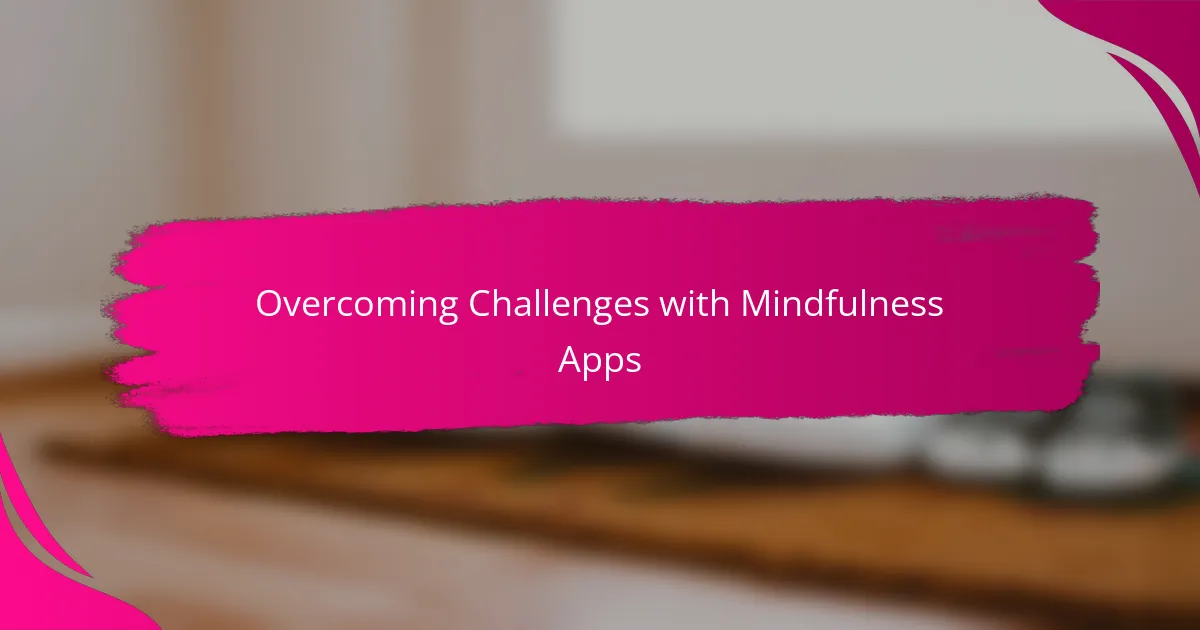
Overcoming Challenges with Mindfulness Apps
At first, I struggled with consistency—getting distracted by a crying toddler or the never-ending to-do list made it tough to follow through. But then I learned to treat the app not as a rigid schedule but as a flexible tool; even a minute or two during a chaotic moment could ground me. Have you ever noticed how giving yourself permission to be imperfect can actually help build lasting habits?
Technical glitches and notification overload were other hurdles. There were times when I missed reminders or the app froze right when I needed it most, which felt frustrating. What helped me was lowering my expectations and remembering that mindfulness isn’t about perfection—it’s about gentle persistence, so I allowed myself to adapt and try again without judgment.
Sometimes, the biggest challenge was resisting the temptation to rush through the exercises just to “get it done.” I realized that authenticity mattered more than completion. Slowing down, even when time was limited, made the difference between a mindless routine and a truly restorative pause. Doesn’t slowing down in a busy day seem like a radical act worth embracing?
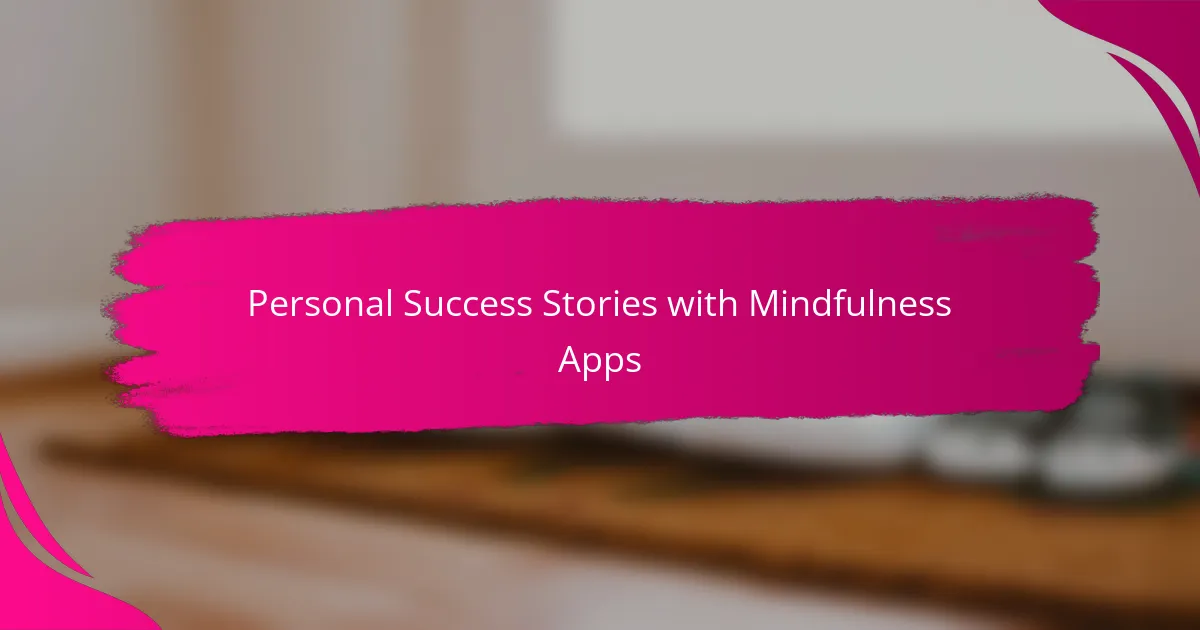
Personal Success Stories with Mindfulness Apps
One moment stands out vividly for me: during a particularly stressful evening, I opened my mindfulness app while my kids were arguing in the background. A simple three-minute breathing exercise calmed me in a way I hadn’t expected, helping me respond with patience instead of frustration. Have you ever experienced how just a brief pause can shift the entire atmosphere at home?
Another time, after weeks of inconsistent practice, I noticed a real change—not just in my mood but in how I connected with my children. The app’s daily reminders felt less like a chore and more like little nudges toward presence. It was surprising how these small, consistent moments accumulated into a bigger sense of calm for both me and my family. Do you find that consistent tiny steps often lead to the most meaningful progress?
Then there was the unexpected gift of sharing mindfulness with my kids directly through the app’s family-friendly exercises. Watching my youngest mimic the breathing patterns and giggle at the guided visualizations made me realize mindfulness isn’t just for adults. This shared experience created a new kind of bonding that felt gentle and joyful. Doesn’t it feel wonderful when something meant for you ends up bringing everyone closer?
